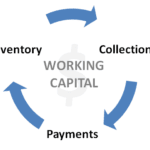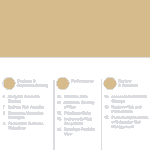Working Capital
Working Capital Working capital is Current Assets reduced by Current Liabilities Permanent Working Capital is the level of liquid assets that must be maintained regardless of the firm’s level of activity or profitability. As the firm’s needs change on a seasonal basis, temporary working capital is increased or decreased. Working Capital Financing Spontaneous financing is […]
Continue reading→Capital Structure
Core Capital Structure Corporate Capital Structure may be financed by bonds, equity, and preference share capital. Bonds Bonds are the main form of long-term debt financing. It is a formal contract to pay an amount of money to the holder at a certain date. Most bonds provide for a series of cash interest payments on […]
Continue reading→Investment Risk and Return
When analyzing an investment decision, it is important to evaluate the risk attached to the investment. The two basic types of Investment risks are: Systematic Risk – It is the market risk that is faced by all firms. Since all investments are affected, this risk cannot be offset through diversification. Unsystematic Risk – It is […]
Continue reading→Demand and Supply
As necessity is the mother of invention, so is the demand the creation of supply. Law of Demand and its determinants Demand is the willingness and ability of consumers to purchase goods and services at various prices during a period of time. Quantity demanded is the amount that will be purchased at a specific price […]
Continue reading→Fiscal and Monetary Policy
Demand Management through fiscal policy Discretionary fiscal policy is spending that is under the control of individuals within the government. Nondiscretionary fiscal policy is enacted by law. The multiplier effect results from the fact that each dollar spent by a consumer in the economy becomes another consumer’s income and so forth. Keynesian theory calls for […]
Continue reading→Business Cycle and Globalization
Business Cycle The tendency toward instability within the context of overall growth is the business cycle. The cycle has 4 phases: Peak Recession Trough Recovery In addition to identifying the phases of the business cycle, one has to be able to assess the business cycle’s impact on an entity’s operations and its industry. Globalization Business […]
Continue reading→COSO Enterprise Risk Management Framework
The COSO Enterprise Risk Management (ERM) framework provides a basis for coordinating and integrating all of an organization’s risk management activities. Effective integration (1) improves decision making and (2) enhances performance ERM is based on the premise that every organization exists to provide value to its stakeholders. ERM is defined as “the culture, capabilities, […]
Continue reading→Corporate Governance
Corporate governance is the combination of people, policies, procedures, and processes that help ensure that an entity effectively and efficiently directs its activities toward meeting the objectives of its stakeholders. Corporate Governance can be influenced by external (eg. SEC requirements) or internal (eg. corporate charters and bylaws) Stakeholders – are persons or other entities who […]
Continue reading→COSO Internal Control – Integrated Framework
You would agree that “Effective corporate governance relies heavily on effective systems of (1) Internal control and (2) Enterprise risk management.” The Committee of Sponsoring Organizations of the Treadway Commission (COSO) has established a widely accepted framework for each system. The COSO framework consists primarily of: A definition of internal control Categories of objectives […]
Continue reading→The Sarbanes-Oxley Act, 2002 and Audit Committee
The Sarbanes-Oxley Act of 2002 (SOX) was spurred by past major accounting scandals that resulted in the loss of investor confidence. SOX, therefore, aims to protect investors by making corporate disclosures more accurate and reliable. Role of Audit Committee Thus, the role of the audit committee becomes essential in the effective execution of the SOX. One […]
Continue reading→








